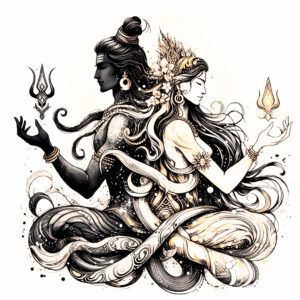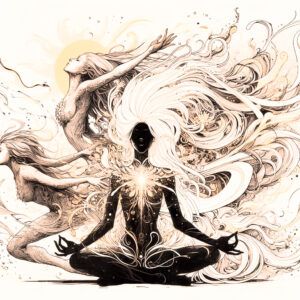
CONCEPT:
Moon Cycle
Pronunciation:
/muːn ˈsʌɪk(ə)l/
Definition:
The moon cycle refers to the continuous pattern of phases the moon undergoes as it orbits the Earth. This cycle, lasting approximately 29.5 days, consists of the new moon, waxing crescent, first quarter, waxing gibbous, full moon, waning gibbous, last quarter, and waning crescent phases.
Other Concepts
Deeper Understanding
The moon cycle, an astronomical marvel observed by humans since antiquity, describes the recurring sequence of moon phases over approximately 29.5 days. This celestial rhythm includes the new moon, waxing crescent, first quarter, waxing gibbous, full moon, waning gibbous, last quarter, and waning crescent. Each phase marks a distinct appearance of the moon as seen from Earth, dictated by the interplay of sunlight and the moon’s position relative to our planet.
Historically, the moon cycle has served as a fundamental timekeeping tool. Ancient civilizations, from the Mesopotamians to the Maya, developed lunar calendars to guide agricultural activities, religious festivals, and societal events. The cycle’s regularity made it an invaluable asset in predicting seasonal changes and planning communal tasks.
Scientifically, the moon cycle results from the varying angles of sunlight illuminating the moon’s surface as it orbits Earth. The new moon phase occurs when the moon is positioned between the Earth and the sun, rendering it invisible to the naked eye. As the moon moves eastward, it transitions through waxing phases until it reaches the full moon stage, where it is fully illuminated. The cycle continues with the waning phases, culminating in another new moon.
The moon’s gravitational pull significantly impacts Earth’s tides, a phenomenon recognized and studied extensively. This gravitational force causes the periodic rise and fall of sea levels, a critical factor in coastal ecosystems and maritime activities. While folklore and anecdotal evidence suggest a lunar influence on human behavior, scientific investigations yield mixed results. Some studies indicate correlations between the lunar cycle and sleep patterns, mood fluctuations, and menstrual cycles. For instance, a study by Cajochen et al. (2013) found evidence suggesting that lunar phases might affect human sleep quality, though the mechanisms remain unclear and further research is needed to establish concrete links.
Culturally, the moon cycle holds profound significance. Many spiritual traditions and esoteric practices align activities with lunar phases, believing that the moon’s energy influences human emotions and intentions. The new moon is often associated with beginnings and setting intentions, while the full moon is considered a time of culmination and reflection.
The moon cycle’s relevance endures in contemporary society, where it continues to inspire fascination and ritual. People engage in moon phase tracking to enhance personal growth, creativity, and spiritual practice. This ancient practice provides a framework for understanding natural rhythms and aligning one’s actions with the broader cosmos.
In essence, the moon cycle is a testament to the enduring connection between celestial movements and terrestrial life. Its influence spans science, history, and culture, underscoring the profound interplay between the cosmos and human existence.
References
Cajochen, Christian, et al. “Evidence That the Lunar Cycle Influences Human Sleep.” Current Biology, vol. 23, no. 15, 2013, pp. 1485–1488.
“Lunar Phases and the Moon’s Orbit.” NASA Science, National Aeronautics and Space Administration, 2021.
Kelley, David H., et al. Exploring Ancient Skies: A Survey of Ancient and Cultural Astronomy. Springer, 2011.

